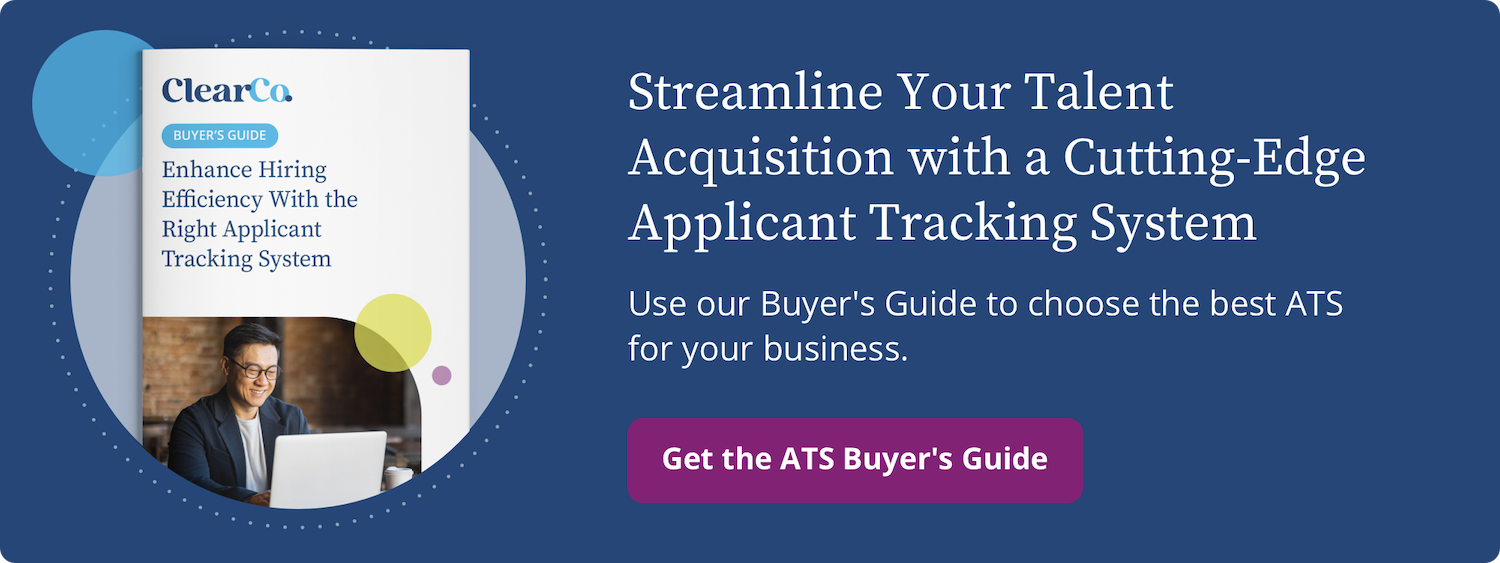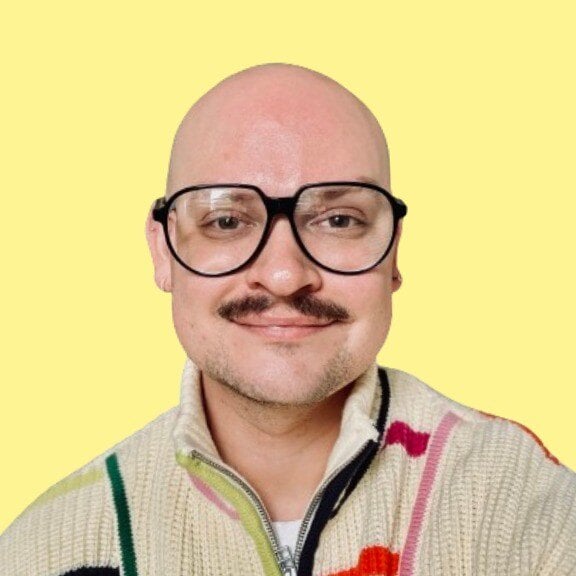This post about choosing a good ATS was originally published in December 2022. It was updated in February 2025 with new information.
Do your human resources or talent acquisition teams currently use an applicant tracking system (ATS)? If so, are you confident that it’s the best ATS for your business?
- Does the ATS offer cutting-edge features, like artificial intelligence (AI) and in-depth talent analytics?
- Does it help you automate tedious tasks, including writing candidate emails, managing job board posts, scheduling interviews, screening resumes, and more?
- Does the ATS provider regularly update the software and release new features?
- Do you have access to top-notch customer service?
- Does your provider help you get the most value possible from the system?
If you answered no to any of these questions — or if you’re wondering, “What is an ATS?” you may be in the market for one. The purpose of an ATS is to expand your team’s capabilities, taking tedious recruiting and hiring tasks off their plates so they can focus on the parts of their jobs that can’t be automated. If your recruitment software isn’t eliminating obstacles and solving problems, there’s a better solution out there.
You have lots of options when it comes to applicant tracking software, but if you know what you’re looking for, you can choose an ATS with confidence. Stick to these ten rules during your search to find the best ATS for your business.
1. Keep business needs top of mind.
The first rule on our list may be the most important one to remember when searching for the right ATS software. Your business needs are the reason you’re on the hunt in the first place, so it’s important not to lose sight of them. Stick to this rule more easily by identifying your goals for the software before you start signing up for demos. Setting goals will help you avoid choosing an ATS based on one flashy feature or good review.
For example, one goal your company may have is to use the ATS to strengthen your employer brand. If the ATS doesn’t offer tools to create branded career sites and consistent job descriptions, you can be certain it won’t meet your company’s needs and take it out of the running.
Tip: Write down the goals your company wants to achieve with the ATS and review them with the project team before each demo so they’re fresh in your mind.
2. Think about who will use the software.
An ATS will primarily be used by HR team members, recruiters, and hiring managers at your company. A cloud-based system ensures that everyone has access to up-to-date information any time they log in. From updating job postings to tracking down candidate data, minimize errors and speed up your processes with an ATS.
You should also look for an intuitive user interface, especially since hiring managers may use the ATS less often than other members of hiring teams. When you’re vetting software, ask each vendor to demo a few workflows or tasks specific to each user type to see how the user experience compares.
Tip: Include employees in different roles who will use the ATS in the search. They can help set goals for the software and sit in on demos.
3. Get a demo of the candidate experience.
Your employees aren’t the only users to consider — candidates will also interact with the ATS. A poor candidate experience can lead to issues like candidate ghosting and cause you to miss out on top talent.
Avoid that by testing the software’s candidate experience tools, including:
- The application process — on both desktop and mobile — including any automatic follow-up tools, like confirmation emails
- Text message applications
- HR chatbot interactions, including screening and scheduling an interview
- Emails from recruiters with interview scheduling links
- Signing offer letters and beginning the onboarding process
This way, you can be sure your HR team is happy and that every job seeker has a great candidate experience.
Tip: Look for an ATS with AI-powered recruiting assistance, including HR chatbots that can schedule interviews and content creation tools that enable fast, personalized communication.
4. Choose an ATS with regular product updates and new feature releases.
Ask vendors about the most recent new feature releases and their typical schedule for software updates. Good ATS providers will notify clients of these updates via channels like in-app announcements, emails, or through account managers. They also proactively ensure clients can take advantage of updates by creating customer support materials or meeting with them one-on-one to demo new features and tools.
Tip: Ask providers about the most recent software outage and how it was handled.
5. Ensure the ATS integrates with existing HR software.
Chances are, your team is already using a few software programs to manage HR functions like payroll and benefits administration. You’ll want to look for an ATS that integrates with your current software to avoid the tedious process of manually entering data into separate systems — and the high risk of error that comes with it. If the ATS has an integration with existing software, the data transfer is hours faster and much more seamless.
Tip: Make a list of HR software your company is using, and indicate which programs may be replaced and which are there to stay. Then, you can quickly determine whether or not an ATS is right for your team.
6. Ask about candidate sourcing capabilities.
A strong ATS can take an active role in candidate sourcing and simplify how you discover talent. When evaluating options, look for sourcing capabilities that allow you to:
- Access a larger talent pool of both active applicants and passive candidates who aren’t actively looking but are open to opportunities.
- Rediscover previous applicants in your database who match new requisitions.
- Refine searches by surfacing the best matches for specific skills, industries, or job requirements so you can focus on the most qualified candidates.
These features expand your reach and speed up the process of building a talent pipeline while improving candidate quality.
Tip: During demos, ask vendors to show you how the ATS helps source talent and how well it integrates with your team's workflow.
7. Look for AI-powered talent analytics and reporting.
Advanced analytics can make or break your recruitment strategy. A top-tier ATS should include AI-driven tools that help you:
- Track essential metrics and monitor trends around hiring performance, candidate engagement, and time-to-hire rates.
- Turn complex data into clear, real-time insights to guide informed decisions.
- Simplify reporting with customizable dashboards to visualize data and identify patterns quickly.
- Analyze metrics to uncover what's driving results and inform your strategy.
With these capabilities, decision-making becomes faster and more transparent, helping you align recruitment goals with long-term success.
Tip: Test the ATS’s reporting tools by asking vendors to demonstrate how they analyze real-world scenarios and present their findings. Pay attention to whether the data presentation is easy to understand and share and if the system offers AI-driven suggestions for continuous optimization.
8. Get client feedback from reviews and case studies.
Great ATS providers will have clients who want to share their positive experiences and results with the software. Look for success stories from clients that are comparable to your company in size, industry, and other factors and with similar goals, like speeding up the hiring process or adding candidate texting.
Search for reviews online and ask sales representatives for case studies to see what clients are saying. In some cases, you can even arrange to meet with current clients to learn more about their experiences.
9. Ask for an implementation timeline.
Software implementation doesn’t happen overnight. It’s often a weeks-long process that involves transferring data, training employees, and setting up workflows. And sometimes, vendors can’t start implementation right away. Map out your desired implementation timeline and decide if there’s any flexibility to help narrow down your ATS choices.
Your team should also decide how much support you want from your ATS provider during and after implementation, like dedicated account managers, training resources, or live chat support. Top ATS providers continue this level of support beyond implementation, helping clients get the most value out of their ATS investment.
Tip: Ask the sales representative if implementations are usually completed on time and which factors might slow the process down.
10. Consider future software needs.
How does your business expect to grow over the next year? Five years? What about the next few decades?
Whether you’re upgrading your system or it’s your company’s first ATS, keep both the near future and long-term vision in mind during your search. Your company may be planning to increase headcount significantly, reskill a cohort of employees, or recruit in new markets as it expands — all of which can impact your choice for the best ATS.
Recruiting and hiring software that is part of a complete talent management system means your team can build its best-fit software as you grow. Start with ATS and Onboarding for a solid Talent Acquisition foundation and incredible data insights.
Designed to handle all parts of the employee experience and integrate with your existing HR systems, you can create a fully integrated ecosystem that evolves with your company’s needs. As your organization grows, you can seamlessly add features like performance management and employee learning — ensuring your HR tech stack remains efficient and future-proof. Choosing an ATS that scales with your business means you won’t have to start from scratch down the line.
ClearCompany’s Guide to Finding the Best ATS
A new ATS is no small purchase. They’ve evolved far beyond resume parsing and job application storage, and there’s no shortage of options on the market. You have to do your research and properly vet providers while thinking about the future of your business. Start the process with these ten rules so you can confidently choose an applicant tracking system that fits.
Still hesitant to take the first steps toward purchasing a new ATS? In ClearCompany’s Applicant Tracking System Buyer’s Guide, we’ll walk you through the process of choosing a new ATS step by step.



